Those of you who read my blog on a regular basis probably wondered why I didn’t post a lot in June. The reason was that I was traveling. Among other places, my journey took me to Hasankeyf, a small town in Eastern Turkey.
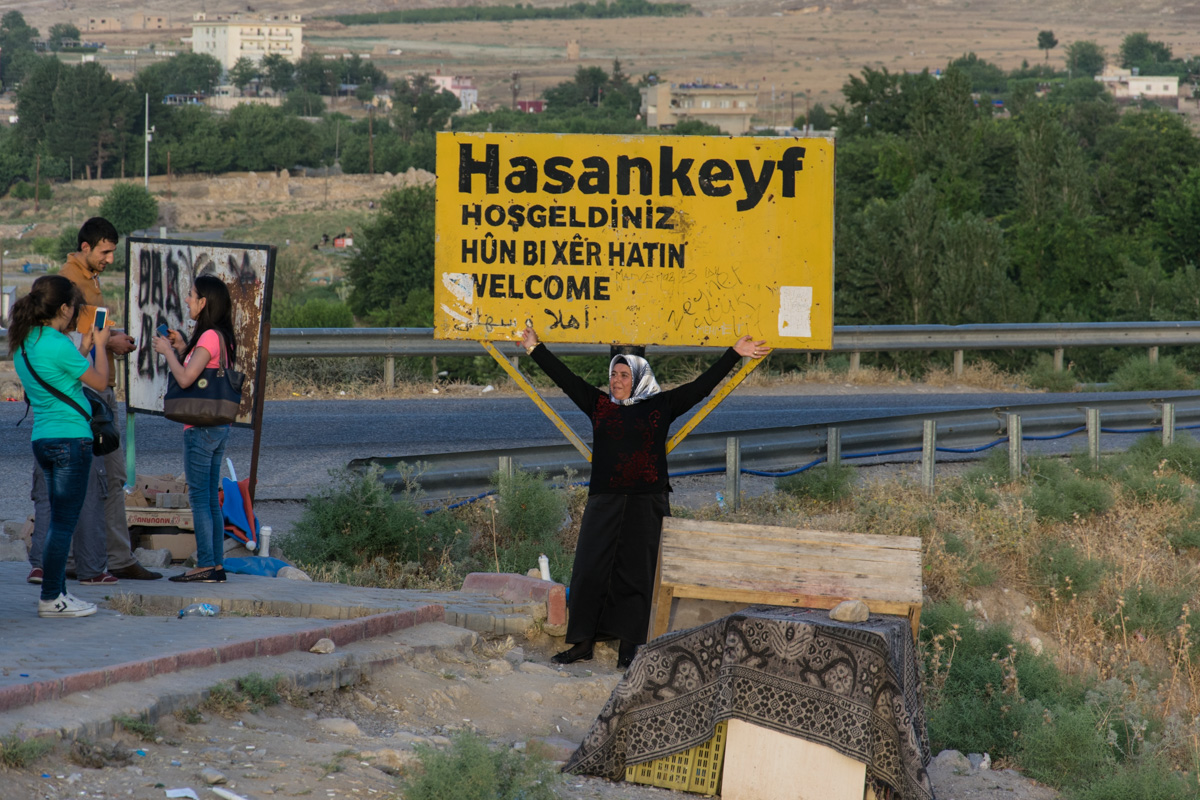
It was my third visit to the city beautifully located at the river Tigris. The first time I was already mesmerized by the beauty of the city: The old cave houses, the large castle on the top of the rock, the remains of the old Roman bridge… Though the danger of Hasankeyf vanishing due to the construction of the Ilısu Dam lingers for a while now, I heard earlier this year that in two years the city should be flooded. I had already planed a trip to Eastern Turkey and therefore I decided to spend three days in Hasankeyf to experience this beautiful place again. It nearly took me a day on several buses from Dersim/Tunceli via Diyarbakır and Batman, but when I finally arrived in Hasankeyf in the evening I went for a stroll through town, watching the sun go down over the river, shops closing and tourists leaving. I sat down in a café, taking in the atmosphere and felt happy to see this place again.

I went to bed early to have some time in the morning to explore the canyons behind the castle where you experience beautiful nature and seemingly endless rocks with more and more caves. As most tourists only visit the main part of the city, I was nearly alone, with the sounds of birds and insects. I enjoyed the quiet and the view of nature and culture so naturally interwoven. In late June, the temperature can be easily more than 40°C, so around noon I went to the center again to sit in the shade with some cool and refreshing drinks. Because I can speak some Turkish I could also talk to some people and learned that no one was happy about the construction of the dam. Most people I talked to want to leave and will probably end up in the suburbs of Istanbul, Ankara, Izmir or Adana. Others want to try their luck in Yeni Hasankeyf – the new city that is already build up on the mountains. But I had the feeling that most people don’t really know what to do when they have to leave. But to me it was instantly clear that a functioning society will be forced apart and most inhabitants have to find a whole new way of continuing with their lives. In the afternoon, when it was cooler again, I went for a stroll on the other side of the river to take a close look at the Mausoleum of Zeynel Bey and the remains of the Artuklu Hamam. After dinner I went back to the local cafés and became acquainted with a man who showed me some old photographs from a time when most of the caves and parts of the castle were still inhabited and people needed to cross the river on a raft, because the new bridge over the Tigris hadn’t been build at this point.

I took this as a cue to read a bit about the city’s history – which, at this point, isn’t completely investigated. But it is clear that Hasankeyf was one of the first human settlements. The city was part of some of the oldest civilizations, and Sumerians, Akkadians, Babylonians and Persians ruled over the city before it became the buffer zone of the conflicts between the Romans and Sassanians. Then it came under Byzantine rule and later saw the emergence of the great Islamic empires. And sadly, this long history of Hasankeyf is about to come to a close soon. Though some of the historic buildings should be transferred to an archeological park in Yeni Hasankeyf, it will only be a dim shadow of what the city is now. Apart from the destruction of history and cultural heritage there are a lot of points that speak against the contraction of the Ilısu Dam: The inhabitants have to suffer the consequences of displacement and incorrectly planned resettlement (I learn that most people will get a third of the price of a house in Yeni Hasankeyf for their old dwellings) that most likely will result in unemployment for a lot of people. From an ecological point of view the dam will harm the entire ecosystem in that region. The massive construction of dams in the Kurdish region of Turkey as part of the GAP project already changed the climate from a desert to a subtropical environment which endangers a lot of spices and results in the growth of germs.

The next day before I left, I climbed on the rock besides the castle where I had a great overview of the city, the canyons and the castle. I felt happy taking in the view, but sad, knowing that this beautiful place will be buried under water soon. For more information about Hasankeyf and what you can do to help, please visit Hasankeyf Matters. There you will also find links to the resources I used for this post.
As I am mainly a photographer, I certainly have some pictures, so you can get a sense of how amazing Hasankeyf is:

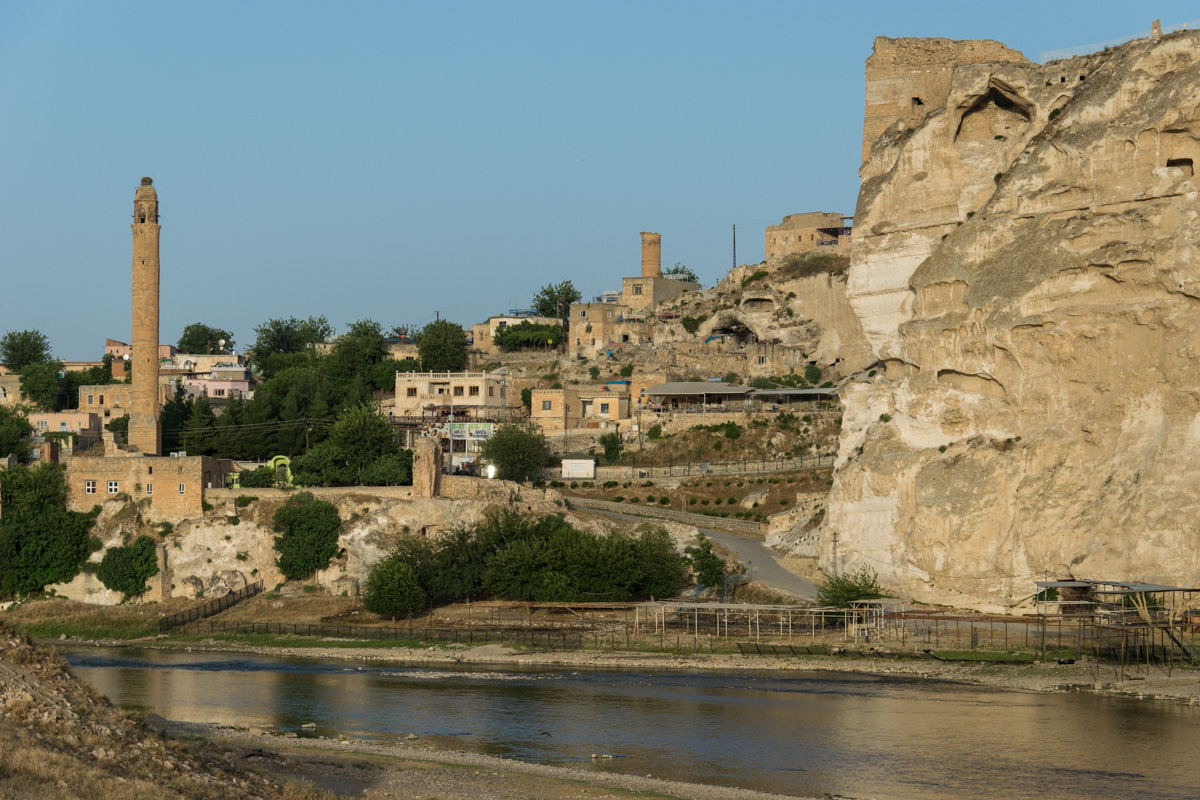


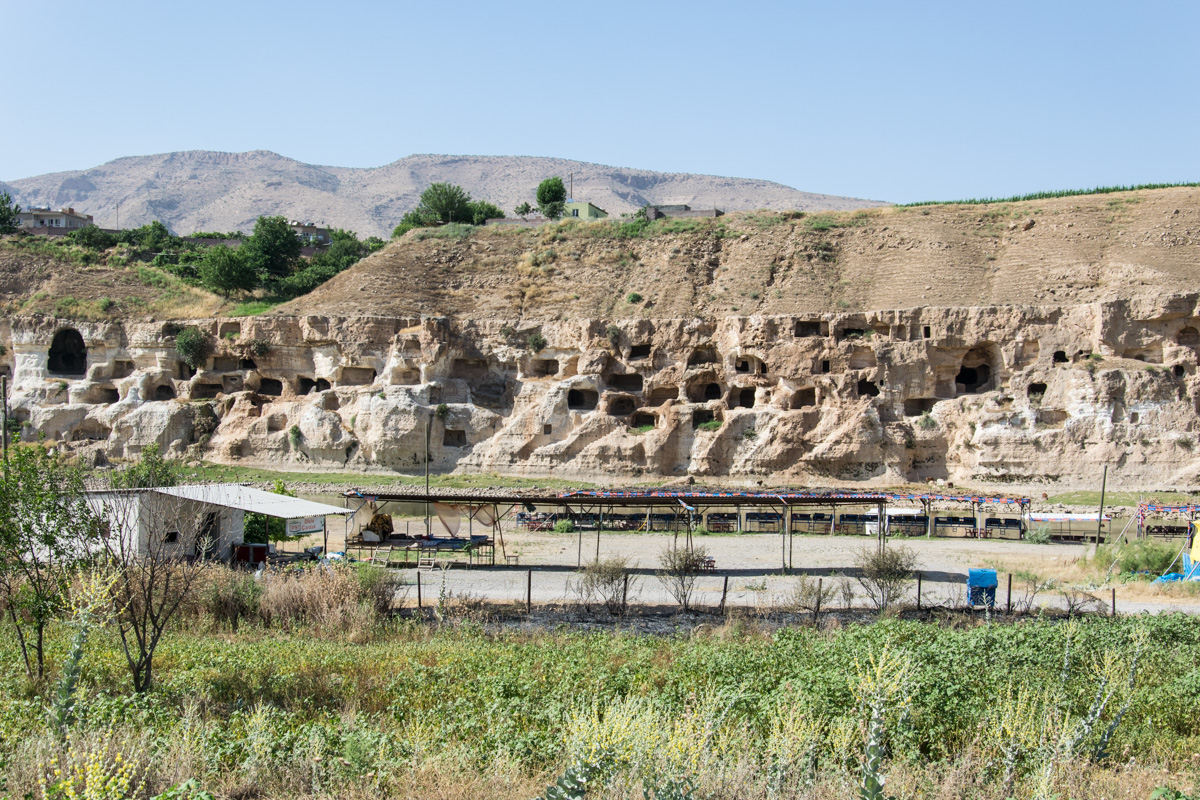

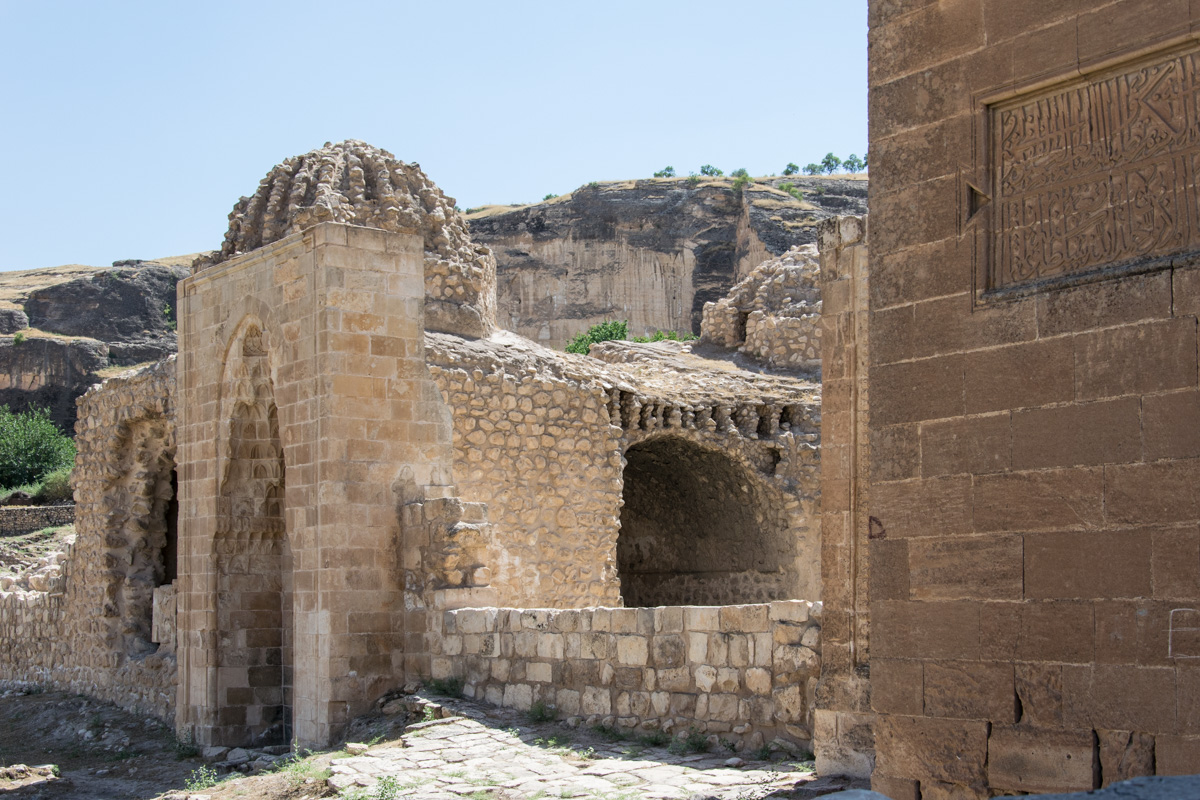
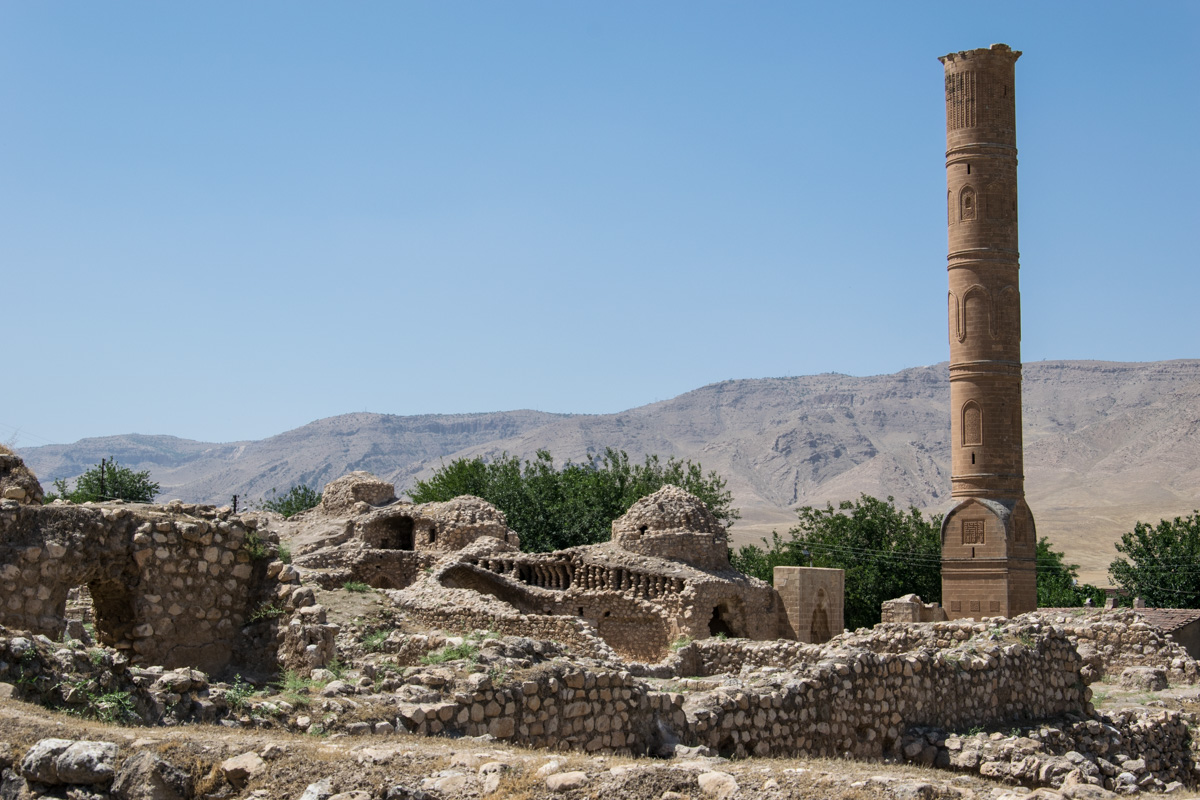








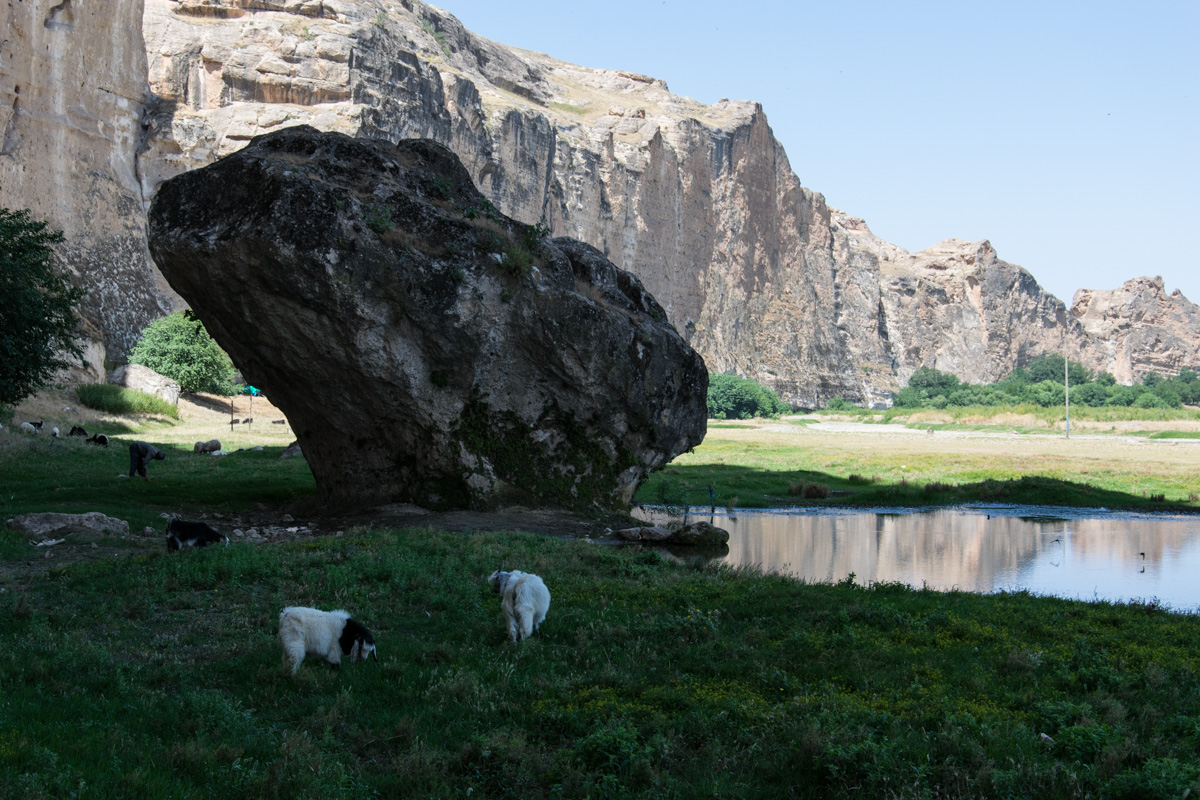
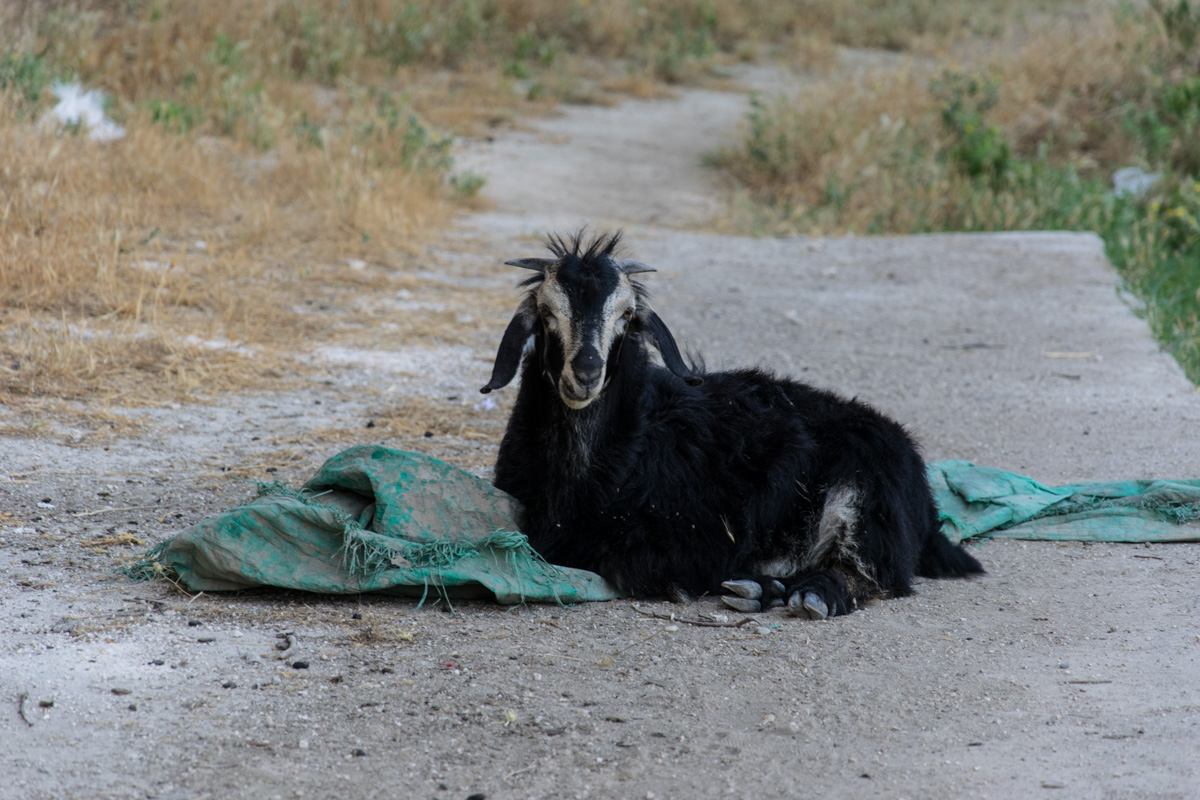
Additionally, here is a video I have been recently made aware of about communities endangered by dams in Turkey (Ilısu, the dam that endangers Hasankeyf) and Brazil (Belo Monte):
















125 responses to “Hasankeyf: A City On The Edge Of Disappearing”
Very interesting and yes, I had been wondering where you had gone off to during your absence – Great shots of a snapshot in time that may soon be gone forever.
LikeLike
Thank you very much for your concerns and compliments, Robert!
Greetings,
rabirius.
LikeLike
Enjoyed your travelogue.
LikeLike
Thank you.
LikeLike
[…] Hasankeyf: A City On The Edge Of Disappearing […]
LikeLike
Fine set and interesting, bit sad story.
LikeLike
Thank you very much.
LikeLike
[…] Source: Hasankeyf: A City On The Edge Of Disappearing […]
LikeLike
Splendid series on part of Turkey which is unknown for me. Thank you for the division.
Beautiful end of evening.
LikeLike
The South East of Turkey is really worth visiting. There are so many amazing places.
LikeLike
Also worth noting all the places this river goes through after leaving Turkey. The dam (and the resulting loss of water down stream) will have an impact on regional politics as well as on the local ecology.
LikeLike
Yes, there are a lot more reasons not to built the dam – and I left out all the political reasons, because I didn’t wanted to write too long a post. I thought to the ecological and social reasons most readers can more easily relate to.
But there are also a lot of internal political reasons – like building barriers in the Kurdish regions of Turkey and depopulation.
LikeLike
This madness of building great dams, like in china, bringing thousands of people, but also animals to leave their habitat, and letting beautiful places to disappear for human eyes is a shame on the economical greed of man.
Transferring the historic buildings to an archeological park in Yeni Hasankeyf will not only be a dim shadow of what the city was and is now, it would bring a fake picture of what could have been and should have been.
We should be much more aware of the damage such constructions, like the massive construction of dams in the Kurdish region of Turkey, as part of the GAP project already brought to the fauna and flora and climate change. Those who can speak should speak up and give a voice for those who can not be heard and will not be seen by many (plants and animals, neglected by man)
I do hope enough Trukish people will react contra and shall find international backing to bring a halt to such demolishing plans.
LikeLike
Thank you for your words.
Yes, it is really sad what is done to communities due to the building of dams.
I just added a short film to the post, comparing the construction of the Ilısu dam to a dam project in Brazil. It also clearly shows what the construction of these mega-dams means to the people.
LikeLike
I love this. Makes me want to travel more. Thank you for liking my blog 🙂
LikeLike
You should definitely try to visit Hasankeyf before it is too late…
…and around that town you will also find other amazing places like Mardin, Midyat or Diyarbakır.
LikeLike
Great post and great pictures. Thanks for the link to Hasankeyf.
LikeLike
Thank you as well.
When just visiting Hasankeyf again just now I felt what it would mean when this place is lost – so I wanted to make – at least some people who read my blog – aware of what is happening.
LikeLike
I enjoyed your discussion. Well maybe “enjoyed” isn’t the word I should be using. Your discussion was worth reading and I wonder at the decisions that are made in the name of progress. Economic or political. I think my word,enjoyed, works better if I use it for the excellent images you posted.
LikeLike
Thank you for the compliment.
I know what you mean. I sometimes have the same feeling just pressing the “like” button when I find a good blog post about some terrible things happening in the world.
LikeLike
Again a dam, utterly senseless and horrible! Thanks so much for this, loved this post and will share it.
LikeLike
Thank you for your compliment and for sharing my post.
The South East of Turkey is already crossed by nearly countess dams that already changed the climate in that region…
…it is a shame.
LikeLike
merci pour cette évasion en photos, superbe
LikeLike
Merci aussi.
LikeLike
Unintelligible how decision makers can be so ignorant… it’s a shame.
LikeLike
Yes, it is. Thank you for your comment.
LikeLike
What a beautiful place and your gallery is spectacular . So sad that such a place may vanish!
LikeLike
Thank you very much.
Yes, it really would be said if Hasankeyf would vanish…
…but I’m still hoping.
LikeLike
Wow Rabirius, what a great post! How sad that it will soon be under water.
Hey you speak a little Turkish, so what nationality are you? Silly Paula thought you were American! Hey it’s not my fault! Hahahaha
Hugs Paula xxxx
LikeLike
Hello Paula,
yes, if Hasankeyf would vanish under water, if would be very sad.
No, I’m not American – I’m sort of European.
Greetings,
rabirius.
LikeLike
Hahaha! Hello sort of European. 🙂
Have a great day, Rabirius. Hugs xxxx
LikeLike
Yes, sort of European…
…I sucked up too many cultures from Europe 🙂
LikeLike
Hahahahaha! Enjoy the weekend. x
LikeLike
Thank you, Paula.
Have a great weekend as well!
LikeLike
Malgré tout une bonne nouvelle, je croyer le site inaccéssible à cause de la situation en Irak et la Syrie.
LikeLike
Non, ce n’est pas un problème de voyager en Turquie du Sud. Peut-être directement à la frontière – mais les endroits les plus intéressants ne sont pas directement à la frontière.
LikeLike
Gran entrada y con fotos muy singulares de esa naturaleza y presencia humana. Saludos.
LikeLike
Muchas gracias.
LikeLike
i did note your ‘radio silence’ but had the inkling you were probably on summer vacation (to brazil to watch the world cup?), given the time of year. thanks for the sharing, very emotional post, we have the same situation over here some years back with the construction of a ‘mother of all dams’ – the bakun dam, which led to severe environmental/ecological changes/damages and displacement of large communities.
LikeLike
Well, I was traveling Turkey and before and after I was on some business trips.
I think that the building of too many dams is not good for the environment – and as I sort of experienced was a dam could do to a community I, naturally, got very emotional about it.
The Bakun Dam? Then you’re from Malaysia?
LikeLike
yes, i am from malaysia, truly asia 🙂
germany was fantastic in last night’s game.
i bet you are celebrating 🙂
high expectations on them now to be champions.
LikeLike
Well, honestly, I’m not really into soccer. For me it is sorta boring, because I’m not really on the side of any team and don’t really care who wins. And when it is over it is more quiet 🙂
LikeLike
what’s your sport, then? 🙂
have a good weekend.
LikeLike
Well, I don’t really have one, I’m afraid.
When the weather is nice, I like taking long walks or a bicycle trip.
But watching sports I find rather boring – I usually prefer a good movie 🙂
I also wish you a happy weekend!
LikeLike
me and agnes enjoy long walks too. when we are on holidays. we opt to walk (long walks) rather than to take a bus/taxi. that way, we really have the full ground experience of the place. catch u again later. ciao!
LikeLike
Yes, I think so too – if you really want to see a place you need to walk 🙂
LikeLike
Thanks for sharing!
LikeLike
Thank you for reading may post!
LikeLike
Reblogged this on rebloggobbler.
LikeLike
Thank you very much for reblogging…
…Hasankeyf is a very special place for me – so I’m especially thankful for it.
LikeLike
You’re are so very welcome Mr. Bey. I thought it was a fantastic post!
LikeLike
Thank you again, Moorezart.
LikeLike
Reblogged this on kuzeykasabasi.
LikeLike
Thank you very much for reblogging. Because I love Hasankeyf it really means a lot to me.
Greetings,
rabirius.
LikeLike
Reblogged this on Bennett Pilgrimages ~ Turkey and Armenia and commented:
Wonderful – thank you!
LikeLike
Thank you very much for retweeting – and the compliment!
LikeLike
Very interesting ,so beautiful and a lot of problems there .Hope they find a resolution to save it.
LikeLike
Thank you, Natuurfreak.
Yes, hopefully Hasankeyf will be saved!
Greetings,
rabirius.
LikeLike
Wow. This is so interesting and sad. You did a wonderful job of describing the place and the inhabitants and making us think about what it will be like for them (and the world) when this little piece of history is gone. It’s hard to imagine standing in a place that will soon be no more.
LikeLike
Thank you very much.
Yes, I think it is really sad and also stupid to destroy your own history and cultural heritage. But money seems to trump everything these days…
…still, I hope that Hasankeyf will be saved somehow.
Greetings,
rabirius.
LikeLike
So interesting. I would love to go to Turkey. How is the political situation now?
LikeLike
Thank you, Annet.
Well, I think at the moment it is okay. I remember being in Diyarbakir two years ago and I noticed a lot of tensions in the city. But now, when I visited it, it was quite relaxed.
But even back then, it didn’t feel dangerous, or anything – so I think it is totally okay to go there…
…and it is so beautiful. Especially the South East, where every city is different and there is so much to discover.
Greetings,
rabirius.
LikeLike
Thanks for the interesting Article. Here is more information on the Armenian history in the city before the Armenian genocide period: http://asbarez.com/57771/turkish-dam-threatens-ancient-armenian-ruins/
LikeLike
Yes, Hasankeyf was home to a lot of different peoples that all left there mark…
…so it really is sad that all this will be gone soon.
Thank you for the link as well!
Greetings,
rabirius.
LikeLike
A very interesting and relevant post.
LikeLike
Thank you.
For me, Hasankeyf is one of the most beautiful places I’ve ever seen…
…and I hope so much that the dam will not be build, or finished.
LikeLike
I think I’d like being in a cave house. Of course it must have original cave paintings on the walls.
LikeLike
Most houses I saw in Hasankeyf didn’t really have paintings – more like patterns and things carved into the rock.
But it is nice and cool there, when it is more than 40°C outside 🙂
LikeLike
Seems so very wrong.
LikeLike
Yes, it is!
LikeLike
Fabulous! This place looks very beautiful. It must be a good trip traveling here!
LikeLike
Yes, it is.
If you have time to visit Hasankeyf you should do it quickly. It might be gone quite soon.
LikeLike
What a beautiful place.
I love the old Roman bridge.
LikeLike
Yes, it is really amazing.
They now started to take some of the building to put them in an archeological park – just imagine the bridge on dry land. It probably won’t be amazing anymore.
LikeLike
I hear you. Sad.
LikeLike
Yes, it is.
LikeLike
Very intersting post with a lot of beautiful places.So sad for the people and I dont understand why they lissent not at people who live there.The water wil make all the history of a people going away..So sad.(sorry for my bad English )
LikeLike
Don’t worry about your English. I can understand you perfectly well.
Yes, it really is sad – and after the article I got a lot of feedback about dam building and it is really bad for nature and communities living there. Also in Brazil, there are some big dam projects where indigenous peoples are relocated – but probably in a lot of other countries as well.
LikeLike
Reblogged this on Marcus' s Space and commented:
Summer is the time many Europeans find time to go across their region but also to cross the borders and visit the European and Asian Turkey, knowing that for political and humanitarian reasons reasons Turkey is still not ready and probably never will be ready to become part of the European Union.
But as Europeans looking at the marvellous beautify country we also should worry how they ttreat nature and do not mind, like the Chines in their virus of financial growth, to put miles and miles under water to get more electricity.
The Unesco should take measures that Hasnkeyf as an important witness of the past, shall not be swept from the bottom. The testimonies of the ancient culture we should cherish. Having still some parts visible from the oldest civilizations, Sumerians, Akkadians, Babylonians and Persians humanity should take care that this buffer zone of the conflicts between the Romans and Sassanians shall stay there to attract visitors from all over the world, to get a picture of our world-history.
LikeLike
Thank you for reblogging.
LikeLike
Beautiful photo’s and yes sad to see it go, when will we ever learn?
LikeLike
Thank you very much…
…yes, it is sad – and now nearly to late to save Hasankeyf, I’m afraid.
LikeLike
How very sad. Dams seem to make us more vulnerable to all sorts of things; thinking of the dam in Mosul. Dams and water are hot subjects in my province too. Instead of growing what the weather permits, we are using dams and waterways to help the land produce what it really wasn’t meant to.
LikeLike
Yes, it is sad – I’m still hoping that Hasankeyf can be saved somehow – but since the European countries dropped out of the project and Turkey is building the dam by itself, I have the feeling that the activism dimmed down a lot.
LikeLike
Really interesting…. thanks for sharing Rabirius
LikeLike
You’re welcome.
Hasankeyf is a very special place for me…
LikeLike
Heartbreaking. Thank you for sharing this special place–I wish I could see it with my own eyes.
LikeLike
Yes, you should really do that. It is a very special place…
…but I’m afraid you have to be quick, due to the dam.
LikeLike
Thanks for documenting this beautiful city and drawing attention to its impending tragic loss. both of its history and its current life. I tweeted this. Hopefully more people will read your very informative post about this historic place. I feel very sad for the people and animals who must relocate.
LikeLike
Thank you very much.
Hasankeyf is indeed a very special place, that will most likely vanish soon, and the people, animals and nature would have to pay the price – so I’m very grateful that you passed on the information.
Greetings,
rabirius.
LikeLike
Wonderful blog, Rabirius, and information I might never have learned had you not shared it. The photographs are beautiful and tell the story as well as your words. Thank you.
LikeLike
Thank you very much as well, Sonnische.
Yes, it is so sad that Hasankeyf will probably vanish soon…
LikeLike
Thank you for sharing this beautiful village. Unfortunately they are often obsessed with destruction of whatever is working in favour of what will not.
LikeLike
Thank you as well.
Yes, Hasankeyf is really beautiful – and humanity will loose so much (of its history) once it is gone…
LikeLike
Just a brilliant web blog Rabirius. If you ever want to share some of your work on cyprusscene.com, for our readers enjopyment, we will be please to receive it.
LikeLike
Thank you very much for your compliments.
I visited Cyprus many times – and there are also some Cyprus Pictures on my site. I can also think of maybe writing something. If I have an idea I will write to you.
Greetings,
rabirius.
LikeLike
You have a very interesting blog!
Congratulations!!
Greetings from Dublin
Tim
LikeLike
Thank you very much, Tim!
LikeLike
Great information with beautiful pictures. The conflict between development and preservation of the environment and culture comes out loud and clear.
Thank you.👍
LikeLike
Thank you as well for your comment.
Hasankeyf really is a special place and it means a lot to me.
LikeLike
Hipersuper post
LikeLike
Otra vez, muchas gracias.
Para mi Hasankeyf es un lugar muy especial.
LikeLiked by 1 person
Lugares interesantes que nos muestras en esos viajes por medio oriente, tan llenos de historia. Que el próximo le sea igual de gratificante.
Disculpa que haya escrito en Español.
Saludos cordiales y un abrazo
LikeLike
No problem, puedo hablar Español.
Para mi, Hasankeyf es un lugar muy especial – pero, lamentablemente, se construye una represa y aguachinará la ciudad.
LikeLike
What an incredibly photogenic place.
LikeLike
Yes, it is. Though they will take some of the old buildings and put them up the hill in an archeological park, before flooding the city…
…it is so sad.
LikeLike
Do you have any details on exactly how they intend to ”move” the historic buildings?
LikeLike
Sadly, news are slim. I wanted to go to Turkey in autumn to see what happens in Hasankeyf, but as there is some kind of war going on I decided to go someplace else.
What I heard is that they want to take the buildings stone by stone and put them in an “archaeological park” – however, from what I heard I think they started a litte and ran out money. So it might well be that most of Hasankeyf will drown in the end…
…which makes me really sad, I have to say.
LikeLike
Best laid plans of mice and men and all that.
LikeLike
…and the destruction of our cultural heritage.
LikeLiked by 1 person
Reblogged this on Manolis.
LikeLike
[…] you follow my blog for some time now, you will probably remember a piece I have written about my latest visit to Hasankeyf. Hasankeyf is an amazing town, beautifully located on the River Tigris in Southeast Turkey with a […]
LikeLike
Rabirius, you have a series of photos that will be very historical sadly ~ wonderful look into a great world that is so strange to know will no longer exist but in memory…
LikeLike
Yes, it is really stage that Hasankeyf will be gone some day…
…but I’m still hoping that the place won’t be flooded.
LikeLike